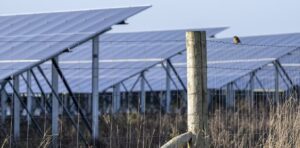
Leading Australian developers Dyesol have today announced the signing of a letter of intent (LOI) to collaborate with the Commonwealth Scientific and Industrial Research Organisation (CSIRO) in the development of perovskite solar cells (PSC).
The LOI creates a non-binding framework for collaboration and co-ordination between the two organizations. The collaboration may be a step towards the development of commercially viable PSC technology, which has long been one of the most exciting areas for the next generation of PV.
CSIRO is currently the 4th largest shareholder in Dyesol. The two have worked together in the past, collaborating back in 2010 on materials for dye sensitized solar cells. Since then, Dyesol has shifted to focus on PSC development.
Dyesol and the CSIRO will combine their respective technical and commercial expertise, in order to seek funding for specific projects from the Australian Renewable Energy Agency and other government sources.
“CSIRO is rapidly developing an expertise in the exciting new PV technology of perovskite solar cells,” stated Richard Caldwell, Managing Director at Dyesol. “We believe that CSIRO is ideally positioned to explore opportunities to improve the technology, as we plan and execute the launch if perovskite solar cell PV products for commercialization.”
Perovskite’s potential to increase a solar cell’s efficiency has long been known in the industry, however, development has been held up by issues with the material’s stability and durability.
Dyesol are already one of the leaders in the field of PSC research, having claimed last year to have produced 1cm perovskite cells, which operated at 10% conversion efficiency for more than 1000 hours of degradation testing.
Competition to develop the first commercial cell using perovskite material looks to be hotting up now though. Dyesol’s research partnership comes just weeks after the U.S. National Renewable Energy Laboratory announced that it had achieved better than 10% efficiency in a perovskite PV cell using quantum dots.
British perovskite researchers Oxford PV also announced earlier this week that it had completed a further round of funding. This means that over the past 18 months they have raised more US$27 million to fund their own research into PSC commercialization.
Source: PV Magazine. Reproduced with permission.










